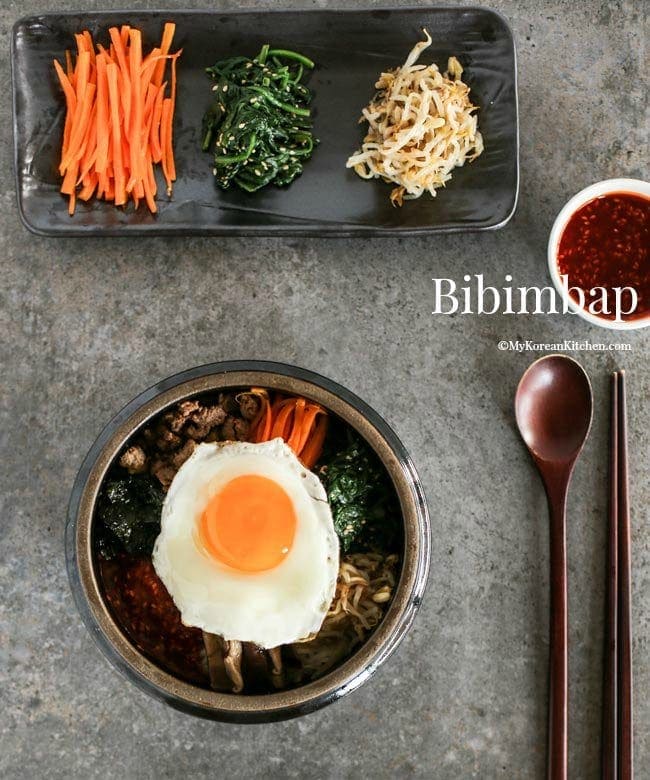
Bibimbap: A Culinary Symphony of Flavors and Textures
Bibimbap, a beloved Korean dish, is a vibrant and flavorful bowl of rice topped with an assortment of vegetables, meat, and a fried or poached egg. Its name translates to "mixed rice," aptly describing the harmonious blend of ingredients that creates a symphony of flavors and textures.
Origins and History
Bibimbap originated in the Jeonju region of Korea during the Joseon Dynasty (1392-1910). It was initially a humble dish, made with leftover vegetables and rice. Over time, it evolved into a more elaborate meal, incorporating various ingredients and regional variations.
Ingredients
The essential ingredients of bibimbap include:
- Rice: Short-grain white rice is the base of the dish, providing a neutral canvas for the other flavors.
- Vegetables: A variety of vegetables are used, including carrots, zucchini, spinach, mushrooms, and bean sprouts. These vegetables are typically seasoned with sesame oil, soy sauce, and garlic.
- Meat: Thinly sliced beef, pork, or chicken is a common addition to bibimbap. The meat is often marinated in soy sauce, garlic, and ginger.
- Egg: A fried or poached egg is placed on top of the rice, adding richness and a touch of creaminess.
- Gochujang (Korean chili paste): This spicy paste is the secret ingredient that adds depth and heat to the dish.
Regional Variations
While the basic ingredients remain the same, bibimbap has developed regional variations throughout Korea. Some notable variations include:
- Jeonju Bibimbap: The original and most famous version, known for its use of a variety of vegetables and a spicy sauce made with gochujang.
- Dolsot Bibimbap: Served in a hot stone bowl, which keeps the rice crispy and the ingredients warm.
- Yukhwe Bibimbap: A luxurious version made with raw beef tartare.
- Bibim Guksu: A cold noodle version of bibimbap, served with a chilled sauce.
Preparation
Preparing bibimbap is a relatively simple process:
- Cook the rice: Rinse the rice and cook it according to the package instructions.
- Prepare the vegetables: Cut the vegetables into thin strips or slices. Season them with sesame oil, soy sauce, and garlic.
- Cook the meat: Marinate the meat in soy sauce, garlic, and ginger. Then, cook it in a pan until browned.
- Assemble the bibimbap: Place a scoop of rice in a bowl. Arrange the vegetables, meat, and egg on top.
- Add the gochujang: Drizzle some gochujang over the ingredients.
- Mix: Thoroughly mix all the ingredients together.
Serving and Enjoying
Bibimbap is typically served hot, with a side of kimchi or other pickled vegetables. It is a versatile dish that can be enjoyed as a main course, a light lunch, or a midnight snack.
Nutritional Value
Bibimbap is a nutritious and balanced meal. It provides a good source of carbohydrates, protein, vitamins, and minerals. The vegetables are rich in fiber, while the meat and egg provide essential amino acids.
Cultural Significance
Bibimbap is more than just a dish; it is a symbol of Korean culture and cuisine. Its vibrant colors and diverse ingredients represent the harmony and balance that are central to Korean society. Bibimbap is often served at special occasions, such as birthdays and holidays, and is a beloved dish that brings people together.
Conclusion
Bibimbap is a culinary masterpiece that showcases the rich flavors and textures of Korean cuisine. Its versatility, nutritional value, and cultural significance make it a dish that is both delicious and meaningful. Whether you are a seasoned Korean food enthusiast or a newcomer to the cuisine, bibimbap is a must-try dish that will leave you craving for more.















